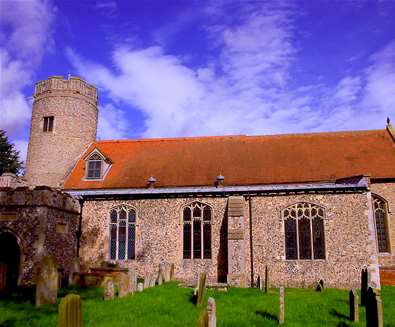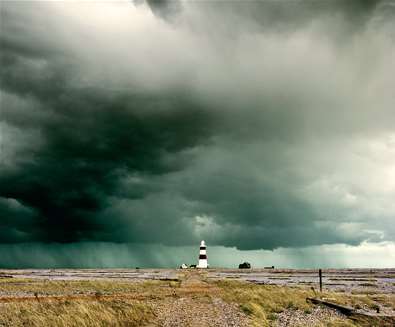You might think that Suffolk, with its calm and pleasant countryside, quaint towns and villages and crisp seaside walks is an unassuming place with very little to unnerve or surprise. Well, you’d be quite wrong!
Beneath its idyllic surface, myths and legends abound, each more curious than the last. Every Suffolk local has their own tale to tell- of strange demonic howling, unexplained happenings and mysterious lights seen in the night. Figments of the imagination? Or otherworldly phenomena? You decide...
The Black Shuck

Believed by many to be the inspiration for the titular hound in the famous Sherlock Holmes story ‘The Hound of the Baskervilles’, the legend of Black Shuck (also known as ‘The Bungay Black Dog) is infamous in the region.
According to folklore the creature has haunted the Bungay and Blythburgh heaths and coastline for centuries. The first mention of the demonic black dog was in 1577, in records that detail how the giant canine burst in through the doors of St Mary’s church in Bungay wrecking havoc and killing a man and a boy. It is said that after this, Black Shuck made its way to Blythburgh Church to maul other unfortunate souls.
If you’re unsure what to believe, pay a visit to Blythburgh Church where you can still see the scorch marks on the door, supposedly evidence of the hellhound’s giant claws.
The Wildman of Orford

The small coastal village of Orford is the location of the rather bizarre tale of a man who came from the sea. The story goes that twelfth century fishermen felt a great weight in their nets one day and when they eventually dragged them from the sea they were alarmed to find a hairy, naked and bedraggled man. He was mute, making only grunts and cries and had no knowledge of the bible or the land.
The fishermen took the Wildman to Orford castle where he was imprisoned and fed a diet of raw fish. Whilst some thought he could be the ghost of a drowned sailor, many speculated that he was a merman, and indeed, when taken to swim in the water, he escaped under the surface, never to be seen again.
If you go to the Church of St Bartholomew in Orford today, you can still see a small stone Wildman at the base of the font.
Rendlesham Forest Incident

Known as Britain’s own ‘Roswell incident’ and with some surprising parallels, the Rendlesham forest incident is a tantalising mystery for anyone with an interest in encounters of the third kind. In December 1980 locals were alarmed to see several unexplained lights in the sky descending into RAF Woodbridge.
Servicemen initially thought the lights were due to a downed aircraft but when they entered the area to investigate they were startled to see what they described as a glowing object, metallic in appearance, with coloured lights. The object moved and sent nearby farm animals into a frenzy. The craft disappeared before police arrived and there were no other corroborating witnesses. In the following days servicemen returned to the spot and discovered small triangular impressions on the ground, as well as burn marks, broken tree branches and a higher than average radiation reading.
Lieutenant Colonel Charles Halt recorded his first hand experience of finding the unidentified flying object in a publically available recording called ‘the Halt tapes’.
Dunwich Atlantis

The coastal village of Dunwich has been exposed to a large degree of coastal erosion throughout the years, which has resulted in what was once a large city with a population of 4000, diminishing as much of it crumbled into the sea- leading to the village being dubbed ‘Britain’s Atlantis’.
Towards the end of the 1300’s particularly ferocious storms wiped out around 400 homes and two churches, and it is said that on stormy nights the frantic ringing of church bells can be heard emanating from the waves.
The Witch’s Stone, Westleton.

St Peter’s Church in Westleton is home to an eerie myth that will send a shiver down your spine and perhaps lead you to pay a visit to sate your curiosity.
Built in around 1340, St Peter’s has been plagued with bad luck through the years, with it’s spire collapsing in a storm and the replacement being hit by a bomb during World War Two. This could be due, in no small part to the suspected presence of the devil himself, whom locals believe resides beneath the church in a small grating to the right of the priest’s door. As well as this, the churchyard contains ‘the witch’s stone’; a flattened gravestone from the 14th century over which grass has never grown. If you dare, you should place a handkerchief in the grate and then using the witch’s stone as a base, run seven times anti clockwise around the church without looking back at the grate, if you do this correctly it is said that the handkerchief will have disappeared and you will hear Satan’s chains rattling beneath the church.
There’s only one way to know if it’s true, and we don’t think we're brave enough to find out…